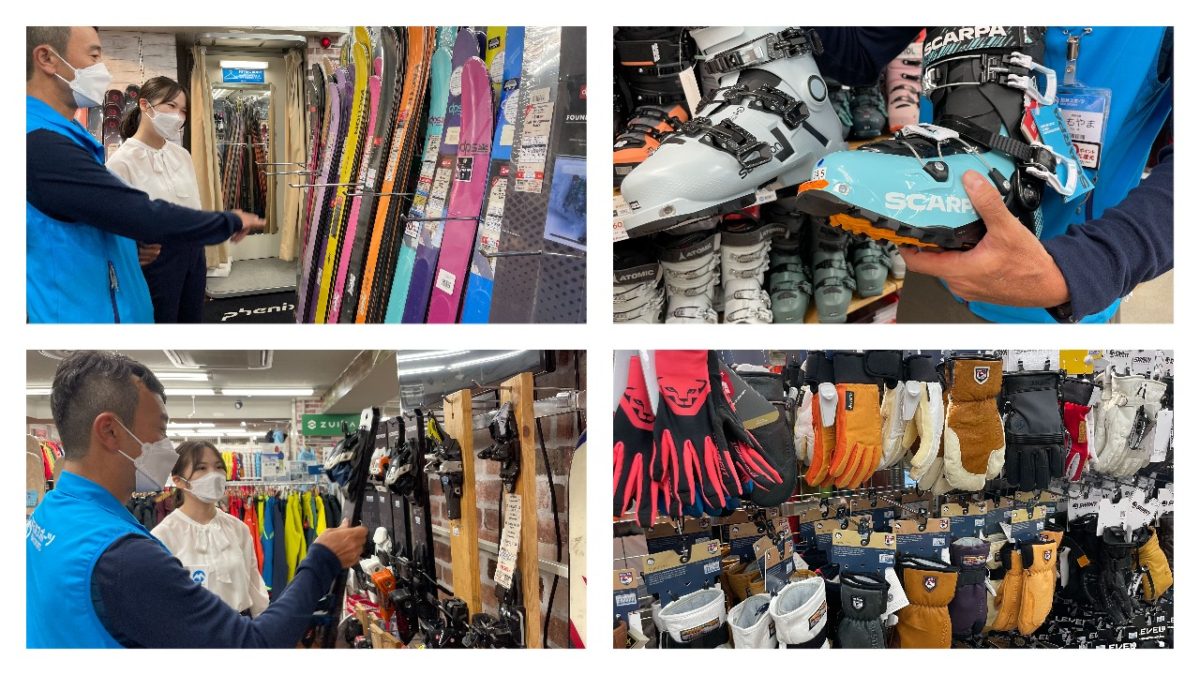The person who wrote the article: A basic skier who has been training enthusiastically for the goal of Iwatake and technique selection when he was a student, and now a free skier who aims to ski freely on fresh snow - an apprentice. STEEP rookie editorial staff.
"What kind of gear should I choose for free skiing for someone who has learned basic skiing?" What kind of things are things?” I asked Mr. Shimoyama of the Ishii Sports Kanda Main Building.
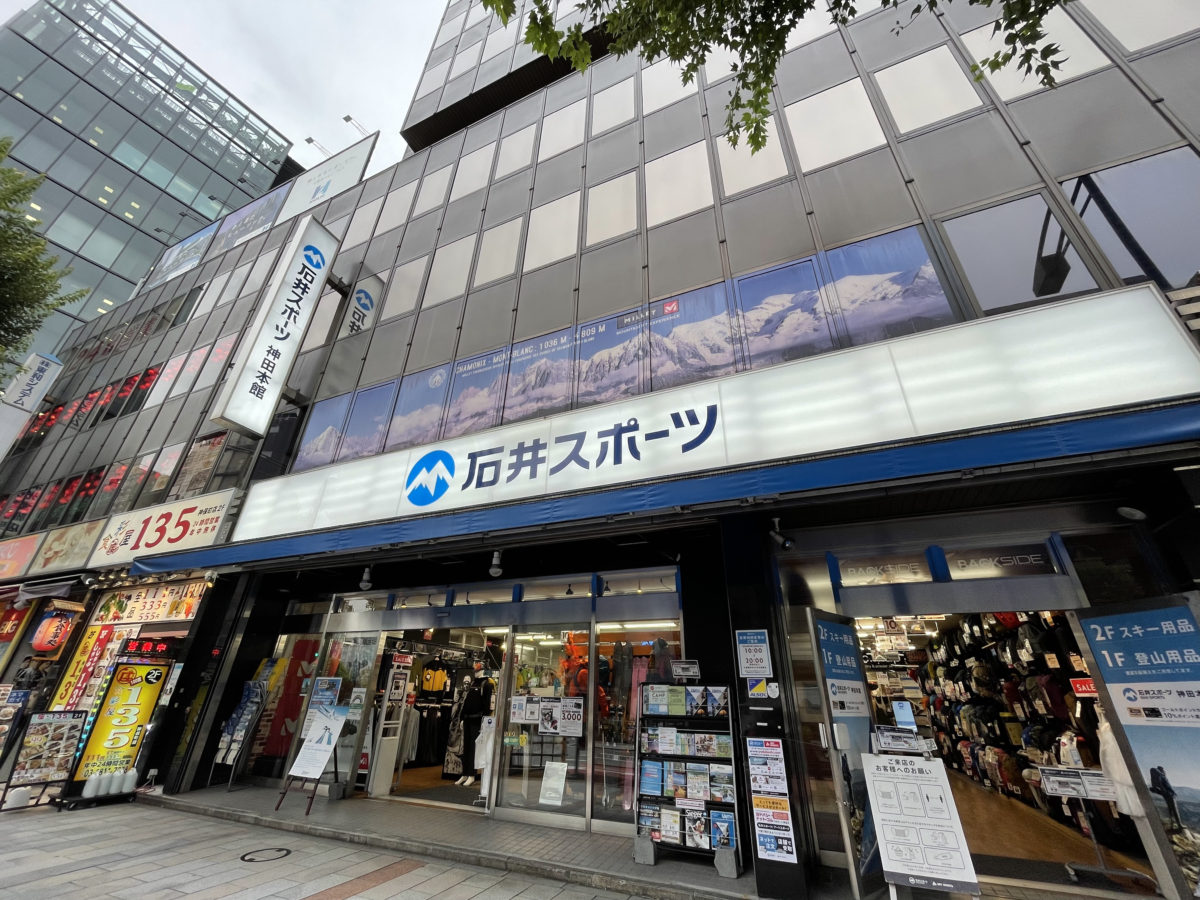
▼We will expand with the answers to Mr. Shimoyama's questions.
What should I pay attention to when choosing a gear?
It is important to draw "the image you want to skate" before choosing gear. Try to imagine as much as possible whether you want to ski powder, enjoy jibbing and jumping on rails and boxes in the park, or go off the slopes and enjoy backcountry skiing with hiking. I'm going to choose the gear after clarifying the ′′ sliding ′′ that I want to do.
What is "free skiing" anyway?
Free skiing is also a category where you can freely ski in your own style, and it is a skiing style that is familiar to culture.
The style of skiing on uncompacted snow, rough terrain, powder, and off-piste natural areas, and the style of self-expression through parks, jumps, and tricks, is sometimes called "freeskiing."
By the way, the FIS collectively refers to these as freestyle ski competitions, including moguls and aerials.
The recent boom in backcountry skiing is also called free skiing. It is also attracting attention as an event that expresses gliding and competes for style. There is a name called "free ride" referring to jumps and skiing with steep slopes in the great outdoors.
Here, we will introduce gear choices by dividing them into "piste & park type" and "BC & powder type".
"Slope & park system" is selected based on "center 100 mm"
This type is for people who want to ski on fresh snow, especially on the slopes, and who want to jump in the park. I don't think it's too uncomfortable for those who switch from basic skis. The big difference is that the center width is wider than the base system, and the binding is set at a lower position without a plate.
center width
For those who have a technical base such as basic skis, we recommend that the center width of 90 to 100 mm is the standard when choosing thick skis for the first time. In the past, all-round fat skis were around 90mm, but recently there are more and more all-around models up to 110mm.
length
For women, around 165-170cm is a standard. In terms of basics, I think women use 150 to 155 cm for small turns and 175 to 180 cm for large turns, but the length is generally determined by the model, so if there is a model you want, you can use it. I think it's good to choose from short, medium, and long in the middle.
Hardness
Men's models tend to be harder than women's models. It's hard to handle if you don't have weight or speed if it's hard, so if you're a woman, I think you can choose a women's product. However, if you are a skier, you may feel that the women's shoes are not enough, so you can choose from the men's shoes as long as you do not remove the length.
"BC & powder type" from "100-120mm"
For BC series, choose a lighter board. If you want to go out into the backcountry and enjoy a tour, we recommend that you consider walking. In addition to skiing comfortably on powder, it is necessary to wear skis to walk and climb, so it can be said that combining basic skis and racing gear is not suitable. It is difficult to walk in hard and heavy gear in the snowy mountains, so choose light weight as well. For purposes such as spring tours, lighter skis are definitely better, so people who value movement speed and lightness may choose narrower or shorter skis.
The powder type is good with a solid eye, but a soft board is recommended. Skis that are hard and do not "bend" will fight with the snow even when skiing on powder. If you want to go powder hunting, be sure to choose soft, "flexible" skis.
Also, if you are concerned about the flapping of your skis, consider skis that use titanium sheets. It's called "metallic". Each manufacturer has devised the thickness and shape of the seat, so there are skis with various characteristics that have a certain amount of rigidity without sacrificing lightness.
center width
For BC, we have a lineup of easy-to-handle models from 100 to 110mm. It's easy to use on the slopes, and you can take it with you to the mountains. Sufficient buoyancy in powder, high running performance in rough terrain, and high grip in tight snow. The ideal all-mountain, all-round ski.
On the other hand, depending on where and what kind of skiing you enjoy, the choice of center width changes, such as around 100mm, around 105mm, around 110mm. You can enjoy the natural terrain changes in the ski resort, draw sharp turns on tight slopes, glide freely in deep powder and enjoy the feeling of floating. If you are aiming for deeply piled up powder, it is 110mm ~. When it comes to big fat of 120mm or more, it becomes rather difficult except powder.
recommended brands

FACTION is popular these days. Legend skier Candido Tovex is a brand that has been deeply involved in development for a long time until the 2021-22 season. There are many skis with excellent performance in all genres because they are skis that were handled by almighty skiers who covered all categories from freestyle to freeride and even big mountain. It is also popular that you are actively promoting movie advertisements on YouTube and SNS.
Column: List of differences between basic skis, slope & park gear, BC & powder gear
| park ski | BC & powder ski | basic ski | |
| plate shape | twin tip, rocker | locker | camber |
| binding position | Center | slightly behind the center | behind the center |
| center width | From 80mm to nearly double the size for foundations | 100-120mm is basic | About 65 to 70 mm |
| How to slide | × small turn △ carving 〇 shift | × small turn △ carving 〇 shift | 〇 Carving △ Shift |
| suitable snow quality | soft snow | powder | compacted snow, hard snow |
| distance to snow | Close (no plate) Good balance, easy to feel and direct | close (no plate) | far plate has a height, making it easier to knock down the board |
How to choose bindings?
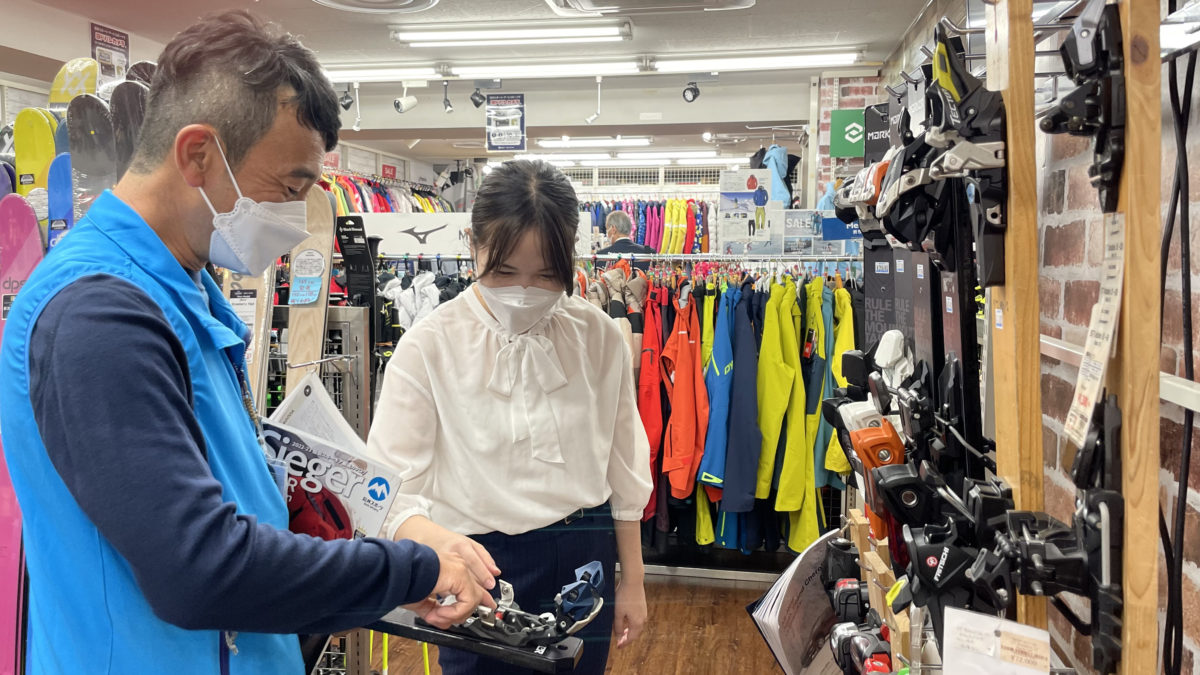
slopes & parks
I would like to choose a lighter weight alpine binding type, but the required release value changes depending on the skier's physique, skiing style and speed. Bindings with a high release value will inevitably become heavy. However, since this is a non-negotiable place, let's choose a model with the necessary specifications!
And, after all, bindings developed for free skiing are recommended. These types of skis, which allow the boot to be set as close to the snow surface as possible, are easy to create deflection of the ski, have excellent operability, and provide high jump landing stability. It also has excellent shock absorption.
backcountry
The type that fixes the toe with a pin called tech binding is mainstream.
It was developed with a focus on ease of walking and lightness, and although it does not assume external pressure as much as alpine style, it has sufficient holding power for normal use. Recently, a hybrid type that combines the best of tech and alpine (he is tech for climbing and alpine for sliding) is also popular. For those who ski at high speed on hard slopes and also jump, use alpine bindings instead of tour types, and when going uphill, attach a gear called "Daymaker Tour" between your boots and bindings. Some items are walkable like tour bindings.
It's important to balance the stiffness of skis, bindings and boots. Match solid things with solid things. Try not to get stuck with hard objects while keeping it lightweight.
how to install bindings?
The purpose of basic skis is to provide stability against speed, so the attachment position of the bindings is behind the center. In the case of free skiing, you are required to turn the ski around yourself, so the center position is close to the center.
Having a binding in the center of the ski makes it easier to switch to change the direction of skiing and to perform tricks. Due to this difference, in freestyle, even if it is a freeski, you can make it easier to use by moving it back and forth according to your preference from the center recommended by the ski manufacturer depending on the desired slip, the slipping environment, and the boots you use. Please find the best position while consulting with the detailed shop staff.
Choosing freeski boots
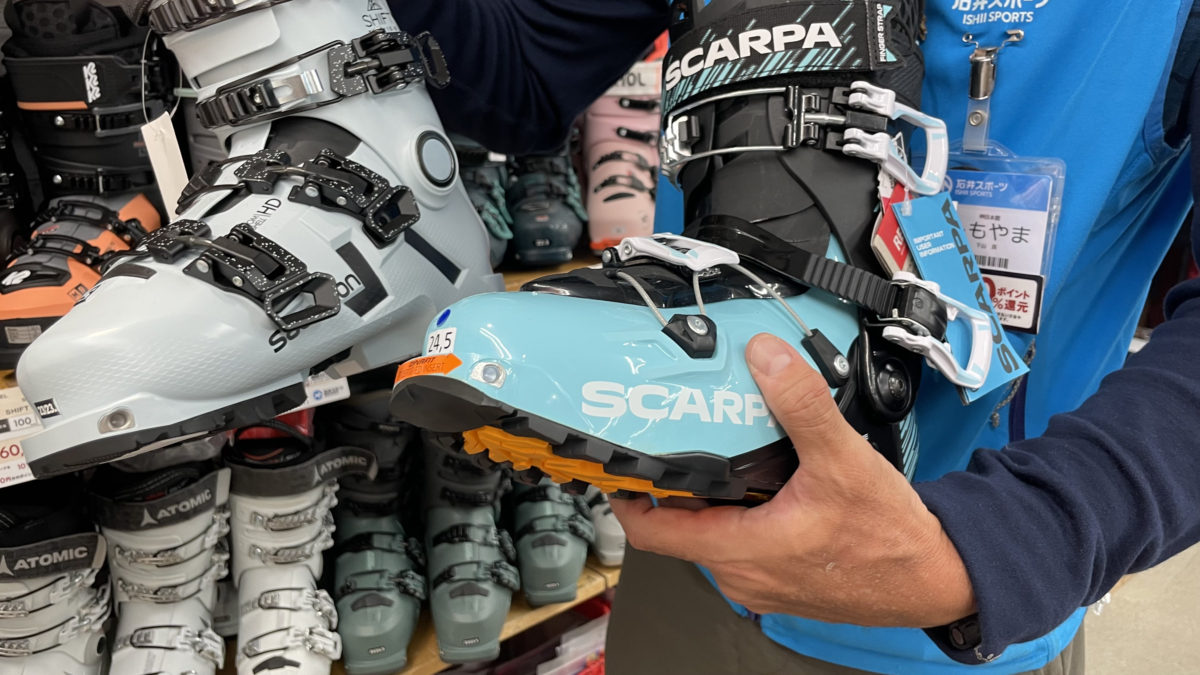
free style model
Mainly models with a 3-piece structure are mainstream, and are characterized by excellent shock absorption and ease of use around the ankle. Rather than carving elements, it has excellent surface operation and is easy to trick. There are models with and without tech inserts for hike ups, walk mode and tech bindings.
Alpine type
Alpine boots are the type that basic skiers can use most comfortably. Especially if carving performance on the slopes is also important, this type is good. I like the flex, but unlike grooming, snow quality and slope changes are large, so it would be better to have a soft one that is about 10% of the hardness that you are currently using to make it easier to make your ankles. Let's choose this considering walk mode and pin tech support.
Lightweight tour type
Even among the lightweight tour models, there are models that can glide hard, but most of them focus on ease of walking and light weight, so their gliding performance is not as good as alpine boots. When hiking for a long time, the necessity increases, but it is necessary to consider that the gliding performance may be sacrificed to some extent.
Each of the three types mentioned above has boots that are compatible with tech bindings, so first of all, if you are considering backcountry skiing among the types that suit you, choose the compatible type.
Each function and style is important, but the foot shape is the most important. It's something that you wear for a long time, so comfort is very important. Luckily, there are many models that can heat mold the inner boots these days, so we can mold them at the store to match the shape of the foot, change them to functional insoles, and work together with the staff to create a pair that is just for you. To go. Let's stick to the contents.
Recommended for basic skiers!
Click here to start freeskiing
Mr. Shimoyama chose these 2 models from the shops.
SALOMON QST98

With an easy-to-use center width of 98mm, SALOMON is originally a manufacturer that mainly makes basic and alpine tires, so it's good for that sense of security and for switching. The ski itself is soft, but it is attractive that it is easy to stabilize without flapping your feet.
BRIZZARD RUSTLER11

|R=21m (188)|¥107,800
The Rusler series has been highly rated since its early days. The titanium sheet under your feet is effective, and even if it is a little thick, it can be used all around!
Bonus Q&A
Want to know more about free skiing
| Q: Can I not use the basic gear that I have been using at all? |
| A: The basics and race ones have a flex that can withstand stiff burns and use stiff ones to transfer power instantly from the boot to the bindings and board. However, in freestyle, the speed doesn't go up that much, so you don't need something that hard. The disadvantage is that if the tool is hard, you will not be able to move on the board. It is difficult to take a free position, so if you have a specific purpose, such as wanting to ski in powder, it is recommended to purchase a special gear. Boots for free skiing have a softer flex value than basics and races. However, it is okay to try various things first with the boots you are accustomed to. The base model is never completely unusable. |
| Q: If I buy boots, can I keep the same flex as before? |
| A: If you choose women's free ski boots, the same numbers are fine. If it's unisex, it might go down one. If you are a woman who can ski, I think you should choose top model ladies. |
| Q: I often hear about grip walk, but what is this... |
| A: It's the rubber on the bottom of the boot, which has recently become mainstream. Boots with this function are much easier to walk. Some people have wondered why they don't transmit power as well as basic or alpine boots, but they are enough for normal slope use. |
| Q: What gear set do you want to have for freeskiing? |
| A: If you're aiming for BC, use a set of bindings and boots that you can walk in. You'll also need stickers that match the skis you've chosen. You'll also need a beacon, shovel, and probe avalanche gear for your backcountry adventures, as well as a backpack to store them. Goggles with different lenses or spare lenses. I carry another glove as a spare. Freestyle requires strong stocks. If you're skating in soft powder, use rings with a big basket. I think that the elastic type that can adjust the thick length is good. |
| Q: In the first place, what kind of skill level can freestyle and freeride genres be? |
| A: In terms of level, it is a genre that can be tackled by people who can "parallel" skiing on the same board. If you don't have a parallel, you won't be able to learn the basic parallel slide. In order to be able to do parallels properly, it is necessary to practice using a foundation or a board for the slopes. If you were doing basic skiing as a competition, there is no problem at all. His skills cultivated in basic skiing will be utilized. |
| Q: Does the way you slide change greatly if your posture changes? |
| A: When it comes to freestyle, it's not something that you can ski hard carving, but you can do carving and sliding with basic skiing skills even with a center 106mm. If you take the board away from your body, the edge will stand, so if you grasp the difference in the sense of distance, you will get used to it. Of course, there are no corners on your feet, so you can use the surface to slide, and the silhouette will be different. It doesn't move quickly, so it's difficult to make a small turn as in basic skiing. |
| Q: I have the impression that if the board is soft, it may flutter. |
| A: In the first place, it naturally flutters because it slides in the basics and the speed range of the race. The amount of vibration that we would like the plate to absorb is only at high speeds, so this is not a problem here. Let's ski after understanding that how to use and how to slide is different. Still, everyone says that customers who have a deep-rooted image of the basics are busy (laughs). |
the person who taught me
Makoto Shimoyama
[Profile]
Born in 1957, from Kanagawa Prefecture.
Basic skiing is a genre packed with the base that is skiing technology. The technology can be applied to various genres such as free skiing! If you develop from freeride to BC, you can jump out of the slope and play in a wide field. BC requires knowledge of mountains, so in the summer you can enjoy climbing mountains. Nowadays, more and more side country areas are open that can be accessed by lift, so let's go to the wide fields of BC to enjoy there. BC is safe if you enjoy using a guided tour.
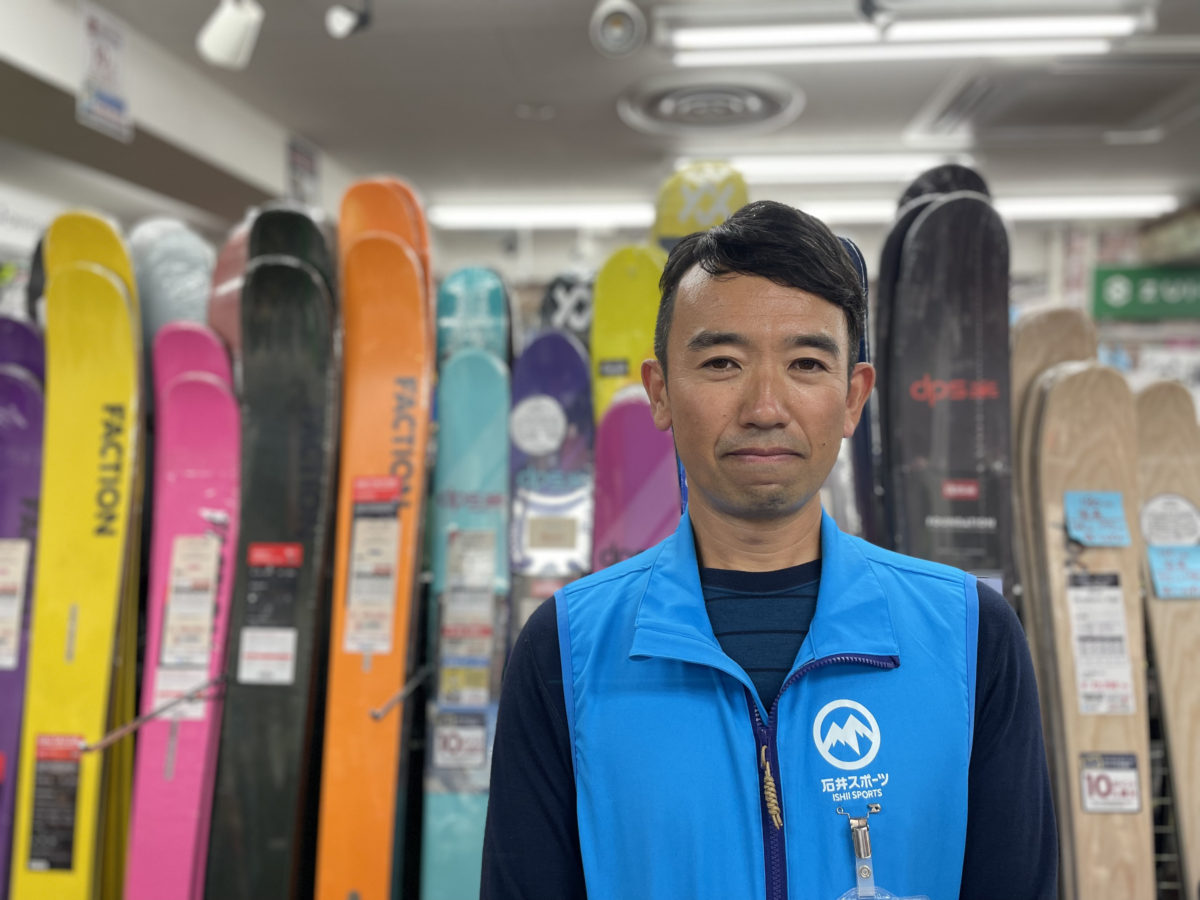
[Interview cooperation]
Ishii Sports Kanda Main Building
Official Website: https://www.ici-sports.com/shop/kandahonkan/
Official SNS: Instagram | Facebook | Twitter
Interview cooperation: Ishii Sports

